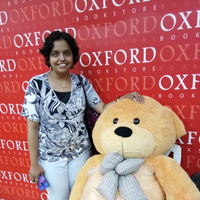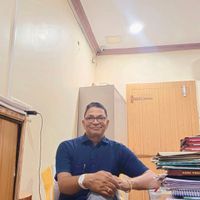Fairytale love story in Army
Fairytale love story in Army


Memsaheb of Switzerland,
The love story of being trapped in the honeymoon trap is a story of heroism? However, it got stuck in the memory of the mind. Read two minutes, and tell yourself the famous love story?
Far beyond the borders of Switzerland!
He always said that he was actually an Indian soul mistakenly born in Europe. He used to get angry if someone called him "foreigner". He was so fascinated by Indian culture that he read many Hindu scriptures. He also had deep knowledge about the ancient history and legends of India. That is why Major General Hiralal Atal, creator of the Param Vir Chakra, sought Savitri Bai's help in designing the medal. So that a medal can be designed that truly embodies supreme bravery.
Eve was born in 1913 in Neuchâtel, Switzerland.
Year 1929, Geneva, Switzerland. A picture-like city on the lap of the Alps and the girl studied in a residential school there. The name is a little short, so I didn't write Eve Yvonne Maday de Maros in Bengali. Father - Andre de Madey is a resident of Hungary, mother - Mareth Hantsel is Russian.
The cheerful girl loved nature and was fond of painting. At a very young age, the blonde girl fell in love with a British Indian soldier. Her father was a Liberian, who left a lot of money in his kingdom. Eve was interested in learning about India's culture, traditions, religion.
Vikram Ramji Khanolkar, I hope you have heard the name. Son of a rich and noble Marathi family, he was a master of horse riding and polo.
An Indian army officer Vikram Khanolkar left school after school to enroll in the Royal Military Academy. Went to Switzerland for Christmas vacation. Travel dear Vikram.
And there, one day, in the lap of a secluded valley, a blonde was seen painting a picture. Unnoticed, a boy was standing on the shoulder of the bow, throwing a bow. It was then that Eve met him. Eve fell in love with this army officer in no time.
After the vacation, Vikram returned to England, but the heart of the 16-year-old was stirred.
And there, one day, in the lap of a secluded valley, a blonde was seen painting a picture. Unnoticed, a boy was standing on the shoulder of the bow, throwing a bow. It was then that Eve met him. Eve fell in love with this army officer in no time.
After the vacation, Vikram returned to England, but the heart of the 16-year-old was stirred.
The girl's father is furious when he hears whether his beloved Dulali will marry a black man from thousands of miles away! not at all mother died in Eve's childhood. But the girl could not forget the first love of her teenage heart. This is called love. He came to Lucknow at the age of eighteen. Married the prince of her dreams. The time is 1932. After marriage Savitri was given a new name from her in-laws, Savitri Bai Khanolkar.
Patidevata was then a commissioned officer in the army. Shift work. He has to travel to different places in India. Savitri also started traveling to different cities in India. He tried to integrate Indian culture.
Fall in love again with the culture of this country, the spiritual Ramayana and Mahabharata Veda Purana and especially the Sanskrit language. Growing up in a western environment, the girl accepted the education and culture of this country in such a way that soon she became the beloved 'wife' of the family. He gave up eating fish and meat. He started reading Sanskrit Punthi, Marathi, and learned to speak Hindi. Gradually became a noble woman in classical music and art. If someone told Memsaheb he would get angry, saying 'My soul is pure Indian, born in Europe by mistake!' Know more stories of Veda Puranas than any ordinary Indian. He took the original extract from the Vedas, the Puranas, the root of Indian Hindu culture. This sacrifice is very important for ending oppression and exploitation for liberation. A person or a nation who can sacrifice for this is freed.
But, from 1857 to 1947, soldiers in British India were honored with the 'Victoria Cross'. A total of 153 Indian and British soldiers were awarded this honour.
1947, the country became independent. His love for India in the army was like a fairy tale. The word reached the ears of then Major General Hiralal Atal. By that time the first war between India and Pakistan was over, many soldiers were martyred. For a long time, he was thinking about whether a medal can be introduced in this country like the 'Victoria Cross', the highest bravery medal of the British Army!
Seeing Savitri Devi's knowledge and skill in art, one day the general called her and gave her the responsibility of designing this medal. The name, however, was decided by him—Paramvir Chakra, the highest gallantry award of the Indian Army!
Savitri was responsible for what she thought first that the design should reflect the Indian culture.
Prime Minister Jawaharlal Nehru did not find any meaning in giving this honor to the Indian soldiers after independence. India started thinking of a new name for the medal to honor the Indian soldiers. In 1948, India announced three honours- Paramvir Chakra, Mahavir Chakra and Vir Chakra. The highest military honors are the Paramvir Chakra, the second and third Mahavir and the Vir Chakra.
Nehru commissioned Major General Hiralal Atal of the Indian Army to design the Paramvir Chakra. Hiralal again gave Savitri the task of making the design. The Major General believed that the best designs can be made only with the deep feeling and knowledge he has about India.
This military honor was announced on 26 January 1950 on Republic Day. Major Somnath Sharma was the first to receive the highest military honour. He was a relative of Savitri.
Eve believed she was actually Indian, mistakenly born in Switzerland.
Khanolkar designed several other major gallantry medals including Ashoka Chakra, Maha Vir Chakra, Kirti Chakra, Vir Chakra and Shaurya Chakra. According to Indian mythology, when sage Dadhichi passed away, his rib bones were used to make a weapon to kill Vritrasura. Which is named Vajra. The god Indra was able to kill Bhritrasura with this thunderbolt and regained the kingdom of heaven. Savitri designed the Paramvir Chakra with a double-bladed vajra, which was popular in Tibetan culture at the time. 13/8-inch diameter bronze medal with Ashoka pillar in the centre. Around which are four replicas of Indra's thunderbolt.
































































